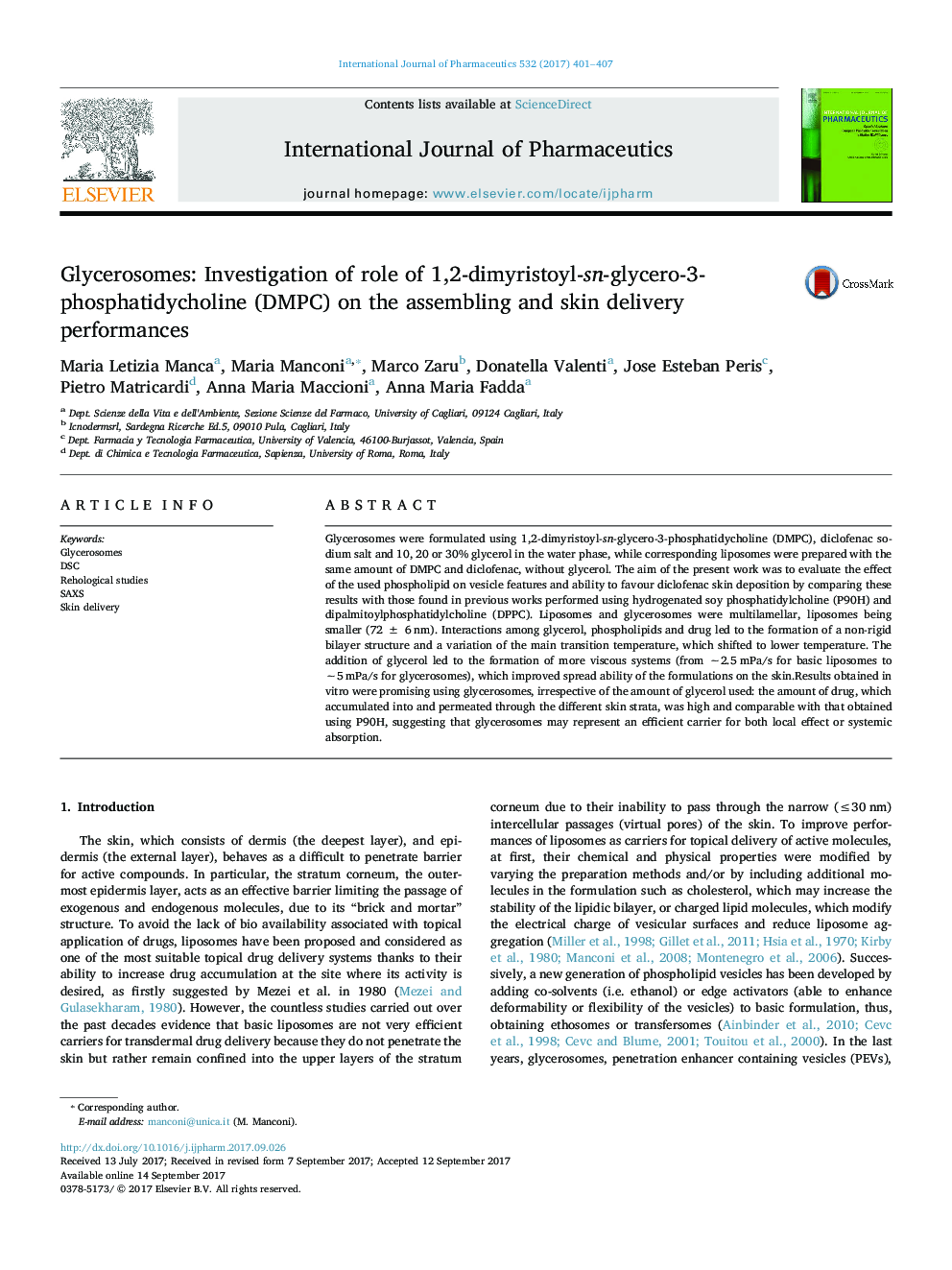| Article ID | Journal | Published Year | Pages | File Type |
|---|---|---|---|---|
| 5550053 | International Journal of Pharmaceutics | 2017 | 7 Pages |
Glycerosomes were formulated using 1,2-dimyristoyl-sn-glycero-3-phosphatidycholine (DMPC), diclofenac sodium salt and 10, 20 or 30% glycerol in the water phase, while corresponding liposomes were prepared with the same amount of DMPC and diclofenac, without glycerol. The aim of the present work was to evaluate the effect of the used phospholipid on vesicle features and ability to favour diclofenac skin deposition by comparing these results with those found in previous works performed using hydrogenated soy phosphatidylcholine (P90H) and dipalmitoylphosphatidylcholine (DPPC). Liposomes and glycerosomes were multilamellar, liposomes being smaller (72 ± 6 nm). Interactions among glycerol, phospholipids and drug led to the formation of a non-rigid bilayer structure and a variation of the main transition temperature, which shifted to lower temperature. The addition of glycerol led to the formation of more viscous systems (from â¼2.5 mPa/s for basic liposomes to â¼5 mPa/s for glycerosomes), which improved spread ability of the formulations on the skin.Results obtained in vitro were promising using glycerosomes, irrespective of the amount of glycerol used: the amount of drug, which accumulated into and permeated through the different skin strata, was high and comparable with that obtained using P90H, suggesting that glycerosomes may represent an efficient carrier for both local effect or systemic absorption.
Graphical abstractDownload high-res image (154KB)Download full-size image
